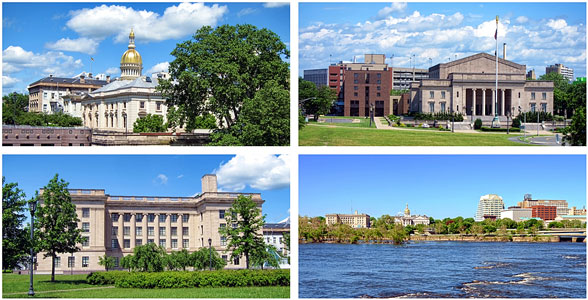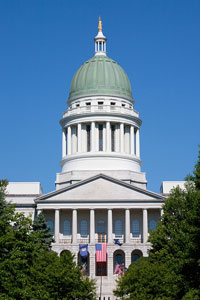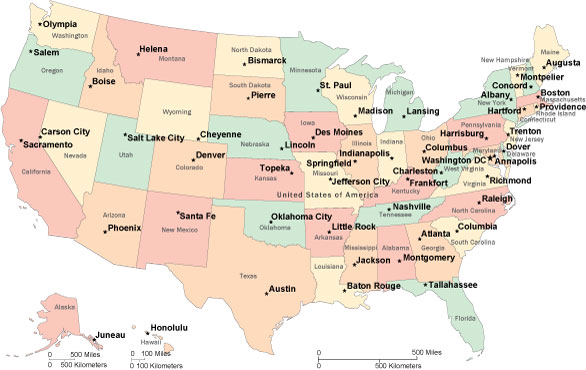USA State Capitals
State Capitals > State Capitals Map • About Us
 These capital cities typically have a state capitol building where the state legislature meets, and the
governor's office can usually be found in the same building. This building
may be called a State Capitol, a Statehouse or State House, or a Legislative Hall.
In some states, the highest state court meets routinely in the capitol building; in other
states, the high court meets in a separate building. In a few states, the capitol building
is for ceremonial use only. And many of the
state capitol buildings are historic landmarks.
These capital cities typically have a state capitol building where the state legislature meets, and the
governor's office can usually be found in the same building. This building
may be called a State Capitol, a Statehouse or State House, or a Legislative Hall.
In some states, the highest state court meets routinely in the capitol building; in other
states, the high court meets in a separate building. In a few states, the capitol building
is for ceremonial use only. And many of the
state capitol buildings are historic landmarks.
 State capitols are often designed with distinctive architectural styles such as Greek Revival, Art Deco,
Italian Renaissance Revival, Federal, and Beaux Arts. Cupola-like domes and drum towers adorn many of these buildings;
only eleven do not have a dome feature. This design was originally used to represent power and unity.
Domes are sometimes gilded with gold. Marble, limestone, and granite are frequently used to construct the
capitol buildings, and their landscaping is often designed to enhance and coordinate with their architectural styles.
State capitols are often designed with distinctive architectural styles such as Greek Revival, Art Deco,
Italian Renaissance Revival, Federal, and Beaux Arts. Cupola-like domes and drum towers adorn many of these buildings;
only eleven do not have a dome feature. This design was originally used to represent power and unity.
Domes are sometimes gilded with gold. Marble, limestone, and granite are frequently used to construct the
capitol buildings, and their landscaping is often designed to enhance and coordinate with their architectural styles.
State capitol building interiors are often constructed with beautiful marble surfaces. Floors may be intricate in design, dome interiors may be decorated with paintings and stained glass, and custom windows may let sunlight flood the interior spaces. Ornate balconies and stairways with carved railings often complete the picture.
This State-Capitals.org website contains information about, and interactive maps of, these state capitals. Use the State Capitals Menu (above) to visit each of the state capital pages; use the State Capitals Map (below) to locate each of the states and their capital cities.
 For maps of, and information about, the United States of America's federal
capital (Washington, DC), please visit the
Washington-DC-Map.com
website.
For maps of, and information about, the United States of America's federal
capital (Washington, DC), please visit the
Washington-DC-Map.com
website.
All rights reserved.